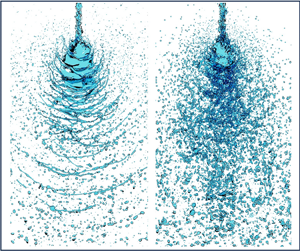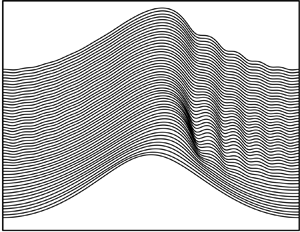Refine listing
Actions for selected content:
1418289 results in Open Access
INS volume 30 issue 9 Cover and Front matter
-
- Journal:
- Journal of the International Neuropsychological Society / Volume 30 / Issue 9 / November 2024
- Published online by Cambridge University Press:
- 15 January 2025, pp. f1-f4
-
- Article
-
- You have access
- Export citation
The morphology and spectroscopy of diamonds recovered from the Prairie Creek lamproite in Arkansas, USA
-
- Journal:
- Mineralogical Magazine / Volume 89 / Issue 3 / June 2025
- Published online by Cambridge University Press:
- 15 January 2025, pp. 307-327
-
- Article
- Export citation
Oriented Temperley–Lieb algebras and combinatorial Kazhdan–Lusztig theory
- Part of
-
- Journal:
- Canadian Journal of Mathematics , First View
- Published online by Cambridge University Press:
- 14 January 2025, pp. 1-43
-
- Article
-
- You have access
- Open access
- HTML
- Export citation
Turbulent atomisation of impinging jets under rising backpressure
-
- Journal:
- Journal of Fluid Mechanics / Volume 1003 / 25 January 2025
- Published online by Cambridge University Press:
- 14 January 2025, A15
-
- Article
- Export citation
Yellowcatite, KNaFe3+2(Se4+O3)2(V5+2O7)·7H2O, the first selenite-vanadate
-
- Journal:
- Mineralogical Magazine / Volume 89 / Issue 3 / June 2025
- Published online by Cambridge University Press:
- 14 January 2025, pp. 421-427
-
- Article
- Export citation
Refining Quinean Naturalism: An Alternative to Kemp’s Stimulus Field Approach
-
- Journal:
- Dialogue: Canadian Philosophical Review / Revue canadienne de philosophie , First View
- Published online by Cambridge University Press:
- 14 January 2025, pp. 1-18
-
- Article
- Export citation
The Rationality of Emotions Across Time
-
- Journal:
- Dialogue: Canadian Philosophical Review / Revue canadienne de philosophie , First View
- Published online by Cambridge University Press:
- 14 January 2025, pp. 1-18
-
- Article
-
- You have access
- Open access
- HTML
- Export citation
Clustering of buoyant tracer in quasi-geostrophic coherent structures
-
- Journal:
- Journal of Fluid Mechanics / Volume 1003 / 25 January 2025
- Published online by Cambridge University Press:
- 14 January 2025, A16
-
- Article
-
- You have access
- Open access
- HTML
- Export citation
Identifying genetic differences between bipolar disorder and major depression through multiple genome-wide association analyses
-
- Journal:
- The British Journal of Psychiatry / Volume 226 / Issue 2 / February 2025
- Published online by Cambridge University Press:
- 14 January 2025, pp. 79-90
- Print publication:
- February 2025
-
- Article
-
- You have access
- Open access
- HTML
- Export citation
Taiwan's Presidents: Profiles of the Majestic Six John F. Copper. London and New York: Routledge, 2024. 242 pp. £36.99 (pbk). ISBN 9781032697901
-
- Journal:
- The China Quarterly / Volume 261 / March 2025
- Published online by Cambridge University Press:
- 14 January 2025, pp. 283-284
- Print publication:
- March 2025
-
- Article
- Export citation
Elliptic hyperlogarithms
- Part of
-
- Journal:
- Canadian Journal of Mathematics , First View
- Published online by Cambridge University Press:
- 14 January 2025, pp. 1-36
-
- Article
-
- You have access
- HTML
- Export citation
Time-dependent nonlinear gravity–capillary surface waves with viscous dissipation and wind forcing
-
- Journal:
- Journal of Fluid Mechanics / Volume 1003 / 25 January 2025
- Published online by Cambridge University Press:
- 14 January 2025, A13
-
- Article
-
- You have access
- Open access
- HTML
- Export citation
List of Reviewers: 1 November 2023–31 October 2024
-
- Journal:
- British Journal of Nutrition / Volume 133 / Issue 1 / 14 January 2025
- Published online by Cambridge University Press:
- 04 February 2025, pp. 136-144
- Print publication:
- 14 January 2025
-
- Article
- Export citation
Race, Voice, and Authority in Discussion Groups
-
- Journal:
- Perspectives on Politics / Volume 23 / Issue 3 / September 2025
- Published online by Cambridge University Press:
- 14 January 2025, pp. 1013-1034
- Print publication:
- September 2025
-
- Article
-
- You have access
- Open access
- HTML
- Export citation
A new model for radiocarbon dating of marine shells from the Netherlands
-
- Journal:
- Radiocarbon / Volume 67 / Issue 2 / April 2025
- Published online by Cambridge University Press:
- 14 January 2025, pp. 378-411
- Print publication:
- April 2025
-
- Article
-
- You have access
- Open access
- HTML
- Export citation
The effect of different exchangeable cations on the CO2 adsorption capacity of Laponite RD®
-
- Journal:
- Clay Minerals / Volume 60 / Issue 1 / March 2025
- Published online by Cambridge University Press:
- 14 January 2025, pp. 53-59
-
- Article
- Export citation
Reactions to no-fault compensation schemes for occupational diseases in the Netherlands: the role of perceived procedural justice, outcome concerns and trust in authorities
-
- Journal:
- International Journal of Law in Context / Volume 21 / Issue 3 / September 2025
- Published online by Cambridge University Press:
- 14 January 2025, pp. 367-388
-
- Article
-
- You have access
- Open access
- HTML
- Export citation
Viola Franziska Müller. Escape to the City. Fugitive Slaves in the Antebellum Urban South. University of North Carolina Press, Chapel Hill (NC) 2022. xii, 248 pp. Ill. Maps. $99.00. (Paper: $32.95; E-book: $22.99.)
-
- Journal:
- International Review of Social History / Volume 69 / Issue 3 / December 2024
- Published online by Cambridge University Press:
- 14 January 2025, pp. 502-505
-
- Article
- Export citation
Dietary preferences and collagen to collagen prey-predator trophic discrimination factors (Δ13C, Δ15N) in late Pleistocene cave hyena
-
- Journal:
- Quaternary Research / Volume 123 / January 2025
- Published online by Cambridge University Press:
- 14 January 2025, pp. 27-40
-
- Article
-
- You have access
- Open access
- HTML
- Export citation
A Pleistocene hyenid trackway from the Cape south coast of South Africa
-
- Journal:
- Quaternary Research / Volume 123 / January 2025
- Published online by Cambridge University Press:
- 14 January 2025, pp. 59-69
-
- Article
-
- You have access
- Open access
- HTML
- Export citation










